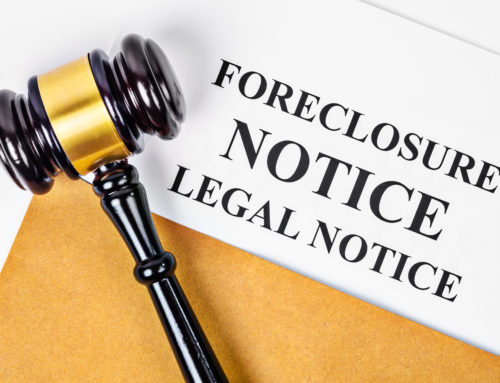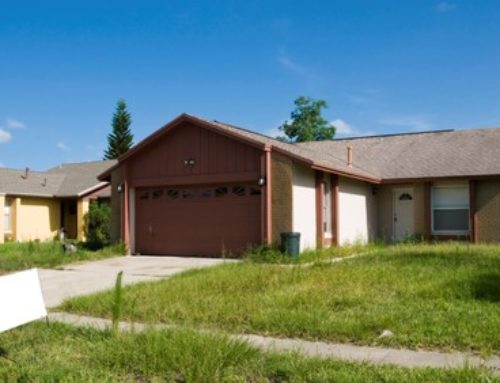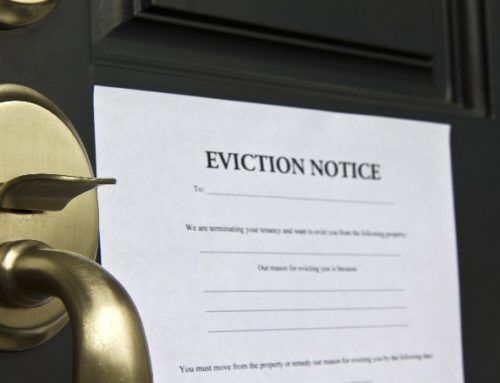New York’s CPLR §213 provides for a six (6) year Statute of Limitations for the enforcement of contracts. Since a mortgage is considered to be a “contract”, foreclosure actions must be commenced within six (6) years. Note that each individual payment due constitutes a separate “cause of action”, and, consequently, each payment becomes “time barred” six (6) years after its due date.
ACCELERATION
Upon the Borrower’s default, however, a lender may accelerate the debt and declare all remaining payments to be immediately due and payable. Once accelerated, there no longer are any multiple payments that become due in the future, but rather, the total indebtedness becomes immediately due and payable. As a result, the entire indebtedness becomes time barred six (6) years after the loan was accelerated. Similarly, when a mortgage matures, by its own terms, the entire balance becomes immediately due and payable and the entire indebtedness becomes time barred six (6) years after the date of maturity.
Note that Acceleration can be made by any act that clearly and unequivocally manifests the intent to accelerate. While one such act occurs when the foreclosure is commenced (first legal), there are other acts as well that will constitute acceleration, such as sending a letter that “manifests the intent to accelerate”. Note also, that receipt of the notice by the Borrower is not required, but that the mere sending of the notice is a sufficient “act”. Accordingly, Lenders and Servicers should be wary about waiting until the “last minute” when calculating the six (6) years from the date of filing of the foreclosure summons.
When drafting notices, care should be taken to use the verbiage “may accelerate”, rather than “will accelerate”, so as to reduce the risk of an unintentional acceleration, however, some courts, nonetheless, treat a letter stating the Lender “may” accelerate as an act of acceleration.
As a result of the extraordinary length of time it now takes to complete a foreclosure in New York, there are many instances where a lender may wish to avoid the consequences of a prior acceleration, if it would cause the entire debt to be time barred, rather than only those payments that became due more than six (6) years ago.
Accordingly, the concept of “De-Acceleration”, the vacating of a prior acceleration, has been frequently litigated, with most courts ruling that where a loan was accelerated, and subsequent to acceleration, the lender takes an affirmative action which “manifests the intent to de-accelerate”, it will vacate the acceleration, provided that the act of de-acceleration occurred prior to the expiration of the Statute of Limitations.
Lenders and Servicers may therefore wish to consider incorporating a de-acceleration letter into their process, having it automatically generated whenever a foreclosure action is dismissed, and accelerate at a future date, should they wish to do so.
ROLLING THE DUE DATE
Where a loan has not yet been accelerated, the lender is not precluded from commencing a foreclosure, but they are precluded from collecting payments that became due more than six (6) years ago. Accordingly, the time barred portion of the debt may be “charged off” and a foreclosure commenced for the remainder.
The practice of “Rolling the Due Date” by providing a fictional date of default that is within the Statute of Limitations timeframe, however, would be a misrepresentation to the court and possibly considered to be fraudulent! Instead, Lenders and Servicers should fully disclose the portion of the debt that is time barred and that the foreclosure is for the remainder only.
TOLLING
CPLR §204(A) provides thatthe duration of a stay resulting from a court or statutory prohibition, is not included, when calculating the six (6) year statute of Limitations period. Accordingly, if the Lender/servicer cannot commence a foreclosure due to a stay, that period time is carved out of the six (6) year calculation, whether or not the loan had been accelerated.
Amongst the most common stays imposed are Bankruptcy Stays pursuant to 11 U.S. Code §362, the Dual Tracking Prohibition mandated by the Dodd-Frank Act, if the borrower submitted a “substantially completed” loss mitigation package, RPAPL 1304 which prohibits the commencement of a foreclosure until at least ninety (90) days have elapsed since the sending of the requisite notice, the death of the Borrower pursuant to CPLR §210(b), which imposes an eighteen (18) month tolling period to allow time to appoint an executor or administrator of the estate.
RE-STARTING THE STATUTE OF LIMITATIONS
Where a Lender or Servicer wishes to foreclose a loan that was accelerated more than six (6) years ago, there are various ways in which the Statute of Limitations time period can be re-started and a foreclosure may thereafter be commenced within the new six (6) year period.
Some examples include receipt by the Lender or Servicer of any payment from the Borrower, no matter how nominal, a written acknowledgment of the debt evidencing the Borrower’s intent to repay it, such as correspondence, loss mitigation applications, or even a Chapter 13 Bankruptcy filing! Note that a Chapter 13 Bankruptcy filing will only constitute such a “written acknowledgement”, if the Debtor’s Chapter 13 Plan provides for payment of the mortgage indebtedness. If Debtor “surrenders” the property, however, then no such acknowledgment exists and the filing of the Chapter 13 Bankruptcy will not re-start the Statute of Limitations.
SECOND CHANCE WHEN FORECLOSURE DISMISSED
AFTER STATUTE OF LIMITATIONS EXPIRES
In addition to the aforementioned tolling and re-start provisions, another form of relief for Lenders and Servicers is found in CPLR §205(a), which provides that where the Statute of Limitations expires during the pendency of an action which is subsequently dismissed, the lender shall be permitted to recommence their action, provided that service of process is effectuated on the defendant within the six (6) months of the dismissal.
CPLR §205(a) will not provide this relief, however, where the foreclosure is dismissed for any of the following reasons:
- Lack of jurisdiction
- Dismissal “on the merits”
- Voluntary dismissal
- Failure to prosecute
It is imperative that should a Lender/Servicer detect a fatal flaw in a pending foreclosure action, after the Statute of Limitations has expired, that the foreclosure not be withdrawn, so as to avoid forfeiting the right to re-commence the action pursuant to CPLR 105(a).
FDCPA LIABILITY
Although New York’s CPLR provides that the Statute of Limitations is an “affirmative defense”, which can be waived if not raised by Defendant, both loan servicers and law firms are subject to the provisions of Fair Debt Collections Practices Act (FDCPA), which expressly prohibits filing a lawsuit or even threatening litigation for time barred debt. Even the filing of a Proof of Claim in a Chapter 13 Bankruptcy may be a violation! A mere “request”, however, for voluntary payment is entirely allowable.
REVERSE MORTGAGES
While there are no payment defaults in connection with Reverse Mortgages, there are other defaults, including the failure to satisfy the indebtedness following the death of the Borrower, non-occupancy of the premises by the Borrower, failure of the Borrower to pay real estate taxes, water & sewer charges, insurance and similar charges, and the failure of the Borrower to maintain the premises. Just like a payment default, these types of defaults trigger the six (6) year statute of Limitations period which begins to run as of the date of default.
RECENT DECISIONS
- Bank of New York Mellon v. Dieudonne, 171 A.D.3d 34 (2d Dept 2019) – Overruled lower court rulings holding that there was no acceleration, notwithstanding that a foreclosure action was commenced, as a result of Paragraph 19 of the standard Fannie Mae Mortgage, which expressly permits reinstatement, after acceleration, until entry of a Judgment of Foreclosure.
- Bank of N.Y. Mellon v Craig, 169 A.D.3d 627 (2d Dept 2019) – Overruled lower court rulings holding that discontinuance of a prior action, without any additional “affirmative action”, acts as a de-acceleration of the loan.
- Wells Fargo Bank, N.A. v Burke, 155 A.D.3d 668 (2d Dept 2017). If a lender lacked Standing to foreclose, that Lender also lacked Standing to accelerate, so the acceleration was not valid!
- Edwards v LVNV Funding, LLC (In re Edwards), 539 BR 360 (Bankr ND Ill 2015). Filing POC for time barred debt constitutes a FDCPA violation.
Have questions about a legal issue concerning the New York Statute of Limitations and mortgage foreclosure? We are here to help! Roach & Lin, P.C., is a New York law firm with over 40 years of experience representing Mortgage Servicers and Investors in Foreclosure, Bankruptcy, Evictions, REO Sales, Loss Mitigation, and Litigation. Contact us at 516-938-3100 or online.





